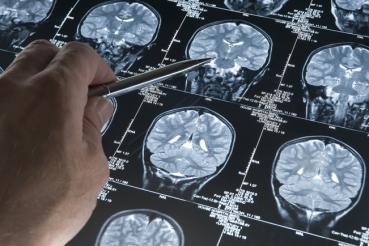CHICAGO – The Rush Stroke Program was recertified with the Joint Commission's Gold Seal of Approval and the American Heart Association’s Heart-Check mark for Advanced Certification for Comprehensive Stroke Centers.
This certification recognizes hospitals that have the most advanced level of stroke care for patients.
Rush has held this designation, the highest of three advanced levels of certification for stroke programs by the Joint Commission, since 2013, and is one of only eight such centers in Illinois.
“We are being recognized again for our multidisciplinary team of specialists who deliver the very best in stroke care. It acknowledges our advanced diagnostic and treatment capabilities and allows us to provide the most comprehensive medical, interventional and surgical therapies,” said Dr. James Conners, medical director of the Rush Stroke Program and the Rush Mobile Stroke Unit.
Rush’s team includes stroke neurologists, neurosurgeons, nurse practitioners, physician assistants, nurses and physical, occupational and speech language therapists.
As a Joint Commission-certified comprehensive stroke center, the Rush team has access to state-of-the-art equipment 24 hours a day, seven days a week, 365 days a year. Rush has a dedicated neuroscience intensive care unit with 28 beds and a dedicated CT scanner.
Rush also is one of only two hospitals in Chicago to receive both the American Heart Association/American Stroke Association's Get With The Guidelines – Stroke Gold Plus Achievement Award and the AHA/ASA's Target: Stroke Elite Plus Honor Roll Award.
“Rush is committed to providing the most appropriate stroke treatment according to nationally recognized, research-based guidelines based on the latest scientific evidence,” said Conners.
Rush also is a major referral center, receiving stroke patients from 85 hospitals in three states.
Once at Rush, patients receive rapid assessment by expert clinicians and access to state-of-the-art neuro-interventional suites in the neuroscience intensive care unit. Additionally, researchers investigate groundbreaking approaches to stroke management in several national clinical trials.
The Rush Telestroke Network provides 14 community hospitals in the greater Chicago area with around the clock access to remote consultations with Rush stroke physicians, who advise about the care of stroke patients at those hospitals using videoconferencing and sharing of electronic medical records. This can help improve outcomes for stroke patients and accelerate treatment for stroke victims which needs to be implemented immediately.
To date, Rush has performed more than 4,000 telemedicine consultations and treated nearly 1,000 patients with the clot busting medication IV tPA.
“Stroke is a life-threatening emergency, and the greatest chance for recovery from stroke occurs when treatment is started immediately after the onset of symptoms,” said Conners. “Newer stroke therapies offered at Rush, such as the Mobile Stroke Unit as well as new endovascular treatments, can rapidly reestablish blood flow and restore patients’ health.”
Rush’s Mobile Stroke Unit, which began operations in November, is a custom-built, state-of-the-art ambulance outfitted with telemedicine technology, brain imaging technology and drug therapies that are critical to accurately diagnose and immediately begin treatment for stroke. Rush was the first hospital in Illinois to announce plans to develop a mobile stroke unit.
The Mobile Stroke Unit is based at Rush Oak Park Hospital and can go directly to a potential stroke patient's home to begin treatment prior to transport to a stroke center. With faster treatment times the MSU aims to save brain tissue and improve outcomes.
Mobile stroke units are a new concept in the United States, and there are only eight in service nationwide.
Stroke is a leading cause of death and adult disability in the United States according to the American Heart Association/American Stroke Association. On average, someone suffers a stroke every 40 seconds, someone dies of a stroke every four minutes and 795,000 people suffer a new or recurrent stroke each year.



